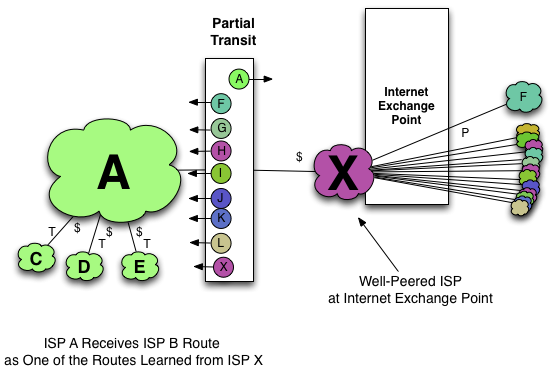Tactic 7. Partial-Route Internet Transit
In this tactic, an ISP that is well-peered at an IXP sells access to the routes that it learned at the exchange.
In this scenario (Figure 11-17), ISP X agrees to sell access to all of the routes that are learned through its peering relationships at the exchange, including ISP B routes, which ISP A desires. The price for partial transit is sold at slightly above the price of transport into the IXP, so ISP X can present a compelling case to ISP A:
“For about the same price as the cost of building into the IXP, you can hear all of the routes that I hear. I have been here for a decade and have many legacy peering relationships that you will not be able to get. I will even throw in my own customer routes. You won’t have to pay the cost for IXP membership; you will have no peering port fees, no colocation costs, or costs for additional routers; and you won’t need any peering people to find peers and establish sessions. Your traffic will simply pass through my router before reaching your target peers. You get all of the benefits of peering without the headaches.”
Notice that ISP X announces all routes through its router. This setup does not achieve a true peering relationship between ISP A and ISP B because there is a network (ISP X) in between. It is still, however, a useful tactic to quickly obtain exchange point routes. This setup is also interesting because it can be very inexpensive for ISP X to provision and sell.

Figure 11-17. Access peer through partial transit sale.

